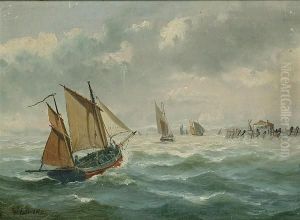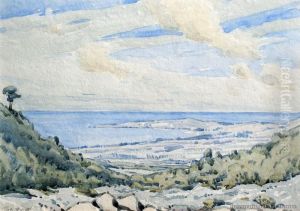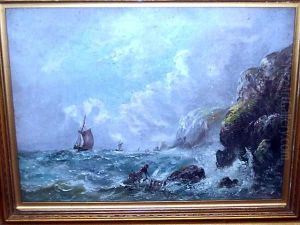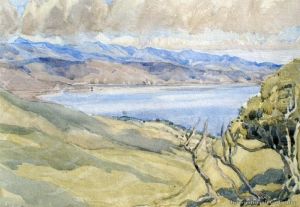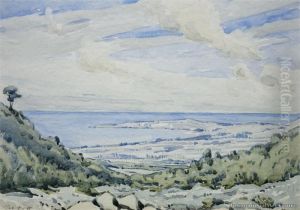Esmond H. Atkinson Paintings
Esmond H. Atkinson, an artist whose life and career were cut tragically short, was born in 1894 and died in 1928. Despite the brevity of his life and career, Atkinson made a notable impact in the art world, particularly within the realms of British art during the early 20th century. His work, which straddles the pivotal moment between the end of Impressionism and the rise of Modernism, provides a fascinating glimpse into the artistic transitions of the time.
Atkinson's artistic journey began at a young age, showing a keen interest and natural talent in drawing and painting. He pursued formal art education, which was quite common for artists of his era, enabling him to refine his skills and develop his unique style. His artwork often reflected the socio-economic and political tensions of his time, capturing the essence of a world in transition. Although his early works were heavily influenced by the Impressionist movement, characterized by loose brushwork and vibrant colors, Atkinson's later pieces began to exhibit a shift towards more abstract and expressionistic tendencies. This evolution mirrored the broader shifts within the art world, as artists sought new ways to express the complexities of the early 20th century.
Atkinson's career was predominantly focused in the United Kingdom, where he participated in several exhibitions and gained a modest but dedicated following. His works were appreciated for their emotional depth and technical skill, drawing attention from both critics and the public. Unfortunately, his career was abruptly halted by his untimely death in 1928, at the age of 34. This premature end left many to speculate on the future contributions Atkinson could have made to the art world.
In the years following his death, Atkinson's work has been reassessed and celebrated for its contribution to British art. His ability to capture the spirit of his times, combined with his technical prowess and innovative approach to composition and color, has earned him a place among the notable British artists of the early 20th century. Today, his works are studied for their historical value and artistic merit, offering insights into the transitional period of art he navigated so adeptly.
